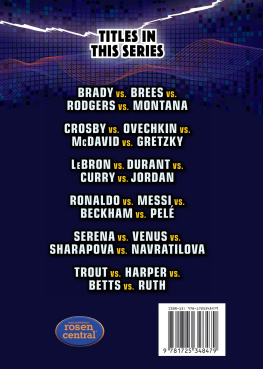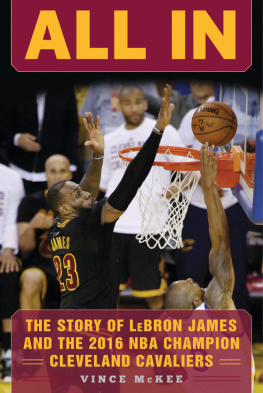Arilova A. Randrianasolo
Department of Marketing, Lacy School of Business, Butler University, Indianapolis, IN, USA
ISSN 2191-544X e-ISSN 2191-5458
SpringerBriefs in Statistics
ISBN 978-3-030-79031-8 e-ISBN 978-3-030-79032-5
https://doi.org/10.1007/978-3-030-79032-5
The Author(s), under exclusive license to Springer Nature Switzerland AG 2021
This work is subject to copyright. All rights are solely and exclusively licensed by the Publisher, whether the whole or part of the material is concerned, specifically the rights of translation, reprinting, reuse of illustrations, recitation, broadcasting, reproduction on microfilms or in any other physical way, and transmission or information storage and retrieval, electronic adaptation, computer software, or by similar or dissimilar methodology now known or hereafter developed.
The use of general descriptive names, registered names, trademarks, service marks, etc. in this publication does not imply, even in the absence of a specific statement, that such names are exempt from the relevant protective laws and regulations and therefore free for general use.
The publisher, the authors and the editors are safe to assume that the advice and information in this book are believed to be true and accurate at the date of publication. Neither the publisher nor the authors or the editors give a warranty, expressed or implied, with respect to the material contained herein or for any errors or omissions that may have been made. The publisher remains neutral with regard to jurisdictional claims in published maps and institutional affiliations.
This Springer imprint is published by the registered company Springer Nature Switzerland AG
The registered company address is: Gewerbestrasse 11, 6330 Cham, Switzerland
Preface
Like millions of Americans, I look forward to tuning in to either ESPN or Fox Sports 1 multiple times per week to catch Stephen A. Smith on First Take lose his temper over Max Kellermans sometimes blasphemous comments or watch Shannon Sharpe on FS1s Undisputed make his case to Skip Bayless on why Lebron James is better than Michael Jordan ever was. Typically, after watching a few debate points, I whip out my phone with conviction and send a message to a group text where a few friends and I debate our viewpoints on whatever NBA topic got me excited or even at times heated that day. These debates usually last all day long (thank god for unlimited text messages), and at the end of the day they go unresolved, usually concluding with lighthearted jabs and agreements to disagree, and every once in a while, someone in the group text would display their disagreements in all caps laced with emojis. Often, after a day of group text arguing, I am left with the question of how to truly settle these debates that seem to run in circles. I wrote this book to provide empirical evidence from statistical analyses on some of the most debated topics that NBA fans, reporters, players, and coaches have had to contemplate. Therefore, the goal of this book is to not only provide empirical evidence to clarify these debates for sports fans to use in their group texts but also bring practical implications to general managers and coaches across the NBA seeking to win championships as wells as journalists and sports analysts to reference. The debates I find most relevant to the NBA in current times are investigated throughout 7 chapters, as discussed in the following paragraphs.
Chapter discusses who da real MVP is. Every single season, NBA fans fight over who they believe deserves the MVP award. For the weeks leading up to the announcement of each seasons MVP, fans, journalists, and sports commentators weigh in on who deserves the most highly regarded individual award in the NBA. The MVP award is decided by votes casted by sports broadcasters and basketball analysts in the NBA world. Some would argue that this process is more of a popularity contest than an award for the actual most valuable player in the league. Therefore, this chapter breaks down what constitutes value for this award, which statistics contribute to building this value, and offers a formula on how to calculate da real MVP. The implications of this chapter reach more than just sports fans seeking to settle age-long debates on who deserves or deserved the MVP award, it also provides a perspective on how recruiters and general managers in the NBA can constitute value for their current and prospective players.
Chapter takes on the task of naming the GOAT. So often, the term GOAT has been diluted to mean any player that has had some consistency in playing at a high level. Personally, I have heard that Lebron James, Kobe Bryant, Wilt Chamberlain, Michael Jordan, Bill Russell, Kareem Abdul-Jabbar, Magic Johnson, Shaquille ONeal, and Tim Duncan, among many others, are all goats. This is a tribe of goats, when the term is meant to crown one player as the greatest of all time. With so many players that span across so many different eras, it is difficult to pinpoint who the actual GOAT is. I mean, the way basketball was played in the 1990s with infamous tough guys like Charles Barkley and Dennis Rodman was so much more physical than the late 2010s when Steph Curry and Dame Lillard regularly launched 3-pointers from near half-court. So how can players be compared across such different eras of the NBA as the game evolves. This chapter seeks to provide an answer to this question by analyzing this herd of goats and their dominance within their respective eras to name who the real GOAT is.
Chapter discusses the myth of the super-team. Within the past decade, there has been an ongoing discussion among NBA fans that super-teams are ruining the NBA, or that some championships are worth less because some superstars decided to team up and dominate the league. This chapter investigates the accuracy of this sentiment. Is the super-team a new phenomenon? Werent the showtime Lakers of the 1980s filled with superstars during their run (i.e., Kareem Abdul-Jabbar, James Worthy, Magic Johnson)? Didnt Larry Bird have a team with eventual hall of famers such as Kevin McHale and Robert Parish on his team to help win 3 championships? Do super-teams actually exist or is this just a myth? This chapter seeks to answer these questions.
Chapter covers how All-NBA selections are made, and whether they are fair and accurate. Where the all-star selection is influenced by the celebrity of certain players since fans and media vote for their favorite players to make the all-star team, All-NBA honors might need to be more methodologically sound since these selections can have long-lasting effects on players careers. In other words, if All-Star selections are chosen with subjective voting methods, shouldnt All-NBA selections be made with more objective measures? This chapter analyzes the selection process for all-NBA teams.
Chapter analyzes the effectiveness of the small ball method, popularized by the Golden State Warriors between 2015 and 2019. The Warriors Hampton 5 line-up (sometimes called the death lineup), consisting of Kevin Durant, Stephen Curry, Klay Thompson, Draymond Green, and Andre Iguodala, were virtually unbeatable, but the small ball method did not work with every team that implemented it. This chapter empirically investigates the conditions in which the small ball method works well in the NBA, and when it is ineffective. This chapter seeks to aid NBA coaches who intend to implement the small ball method.













